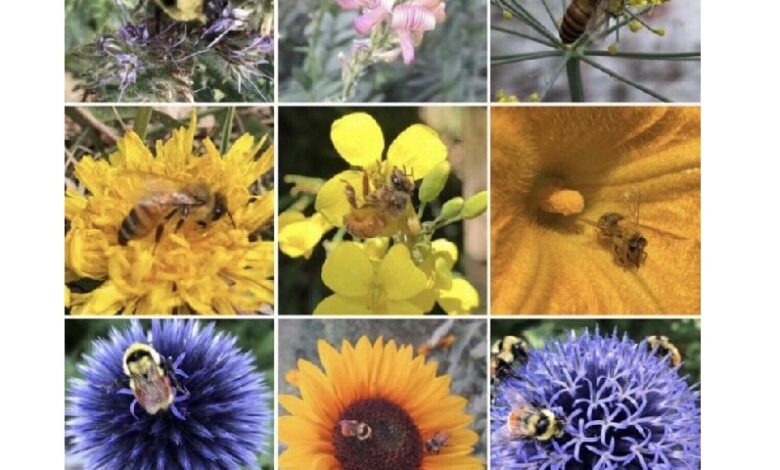Urgent need for the conservation of our precious medicinal plants


Saikat Kumar Basu
Medicinal plants play a significant role in the healthcare practices of tribal and non-tribal communities across Asia, Africa and Latin America. Some common uses and applications include:
Traditional Healing Practices: Tribal communities have a rich tradition of using medicinal plants for various health purposes. They often rely on traditional healers within their communities who possess knowledge about the preparation and use of these plants.
Treatment of Ailments: Medicinal plants are used to treat a wide range of ailments, including digestive disorders, skin conditions, respiratory problems, and more. For example, the leaves of neem are used for their antiseptic properties, and tulsi (holy basil) is used to alleviate cold and cough.
Antidotes: Some plants serve as antidotes to snake bites and other poisonous substances. The roots or extracts of certain plants are applied or ingested to counteract the effects of toxins.
Herbal Remedies: Medicinal plants are often used in the preparation of herbal remedies, which are believed to have fewer side effects compared to modern pharmaceutical drugs. These remedies can include various plant parts like leaves, roots, and bark.
Cultural and Ritual Significance: Medicinal plants also have cultural and ritual significance within tribal communities. They are sometimes used in rituals and ceremonies to ward off evil spirits or to invoke blessings for health and well-being.
Income Generation: Harvesting and selling medicinal plants can provide a source of income for marginalized and economically backward tribal communities. Sustainable harvesting practices are essential to ensure the continued availability of these plants.
Conservation Efforts: Recognizing the importance of medicinal plants, there have been efforts to conserve and promote their sustainable cultivation. This includes initiatives to educate tribal communities about responsible harvesting and cultivation techniques.
Collaborative Research: Researchers and organizations often collaborate with tribal communities to document traditional knowledge about medicinal plants, validate their efficacy through scientific studies, and develop herbal medicines based on this knowledge.
Economic Empowerment: Medicinal plant cultivation and trade can be part of economic empowerment programs for tribal communities, providing them with livelihood opportunities.
Healthcare Access: In remote tribal areas with limited access to modern healthcare facilities, medicinal plants can be a crucial resource for addressing common health issues.

It is important to note that while the use of medicinal plants has cultural and historical significance, efforts are needed to ensure the sustainability of these practices and the preservation of biodiversity. This includes promoting responsible harvesting, conservation of rare and endangered plant species, and integrating traditional knowledge with modern healthcare systems for the benefit of tribal communities. However, it is quite alarming that the number of medicinal plant species across vast stretches of South Asia are slowing depleting at a very fast and unprecedented pace. This is a very distressing news as we are at the verge of losing several medicinal plant species necessary for medical treatments both by tribal and non-tribal communities (mostly harvesting by pharmaceutical companies producing drugs from plant based chemicals or ‘phytochemicals’).
Conserving endangered medicinal plants is essential for several reasons. Medicinal Value: Many of these plants are a source of traditional and modern medicines, providing treatments for various ailments. Losing them could limit our ability to develop new medicines and treat diseases. Biodiversity: Medicinal plants are a crucial. component of Earth’s biodiversity. Their loss can disrupt ecosystems and impact other species that depend on them.

Cultural Heritage: Indigenous and local communities often have deep cultural and spiritual connections to medicinal plants. Preserving these plants helps protect cultural traditions and knowledge. Economic Value: Medicinal plants can be an important source of income for communities through sustainable harvesting and trade. Their loss can affect livelihoods. Research Potential: Endangered medicinal plants may hold undiscovered compounds with medicinal properties. Conserving them allows for future scientific exploration and drug development. Ecosystem Services: Medicinal plants contribute to ecosystem services like pollination and soil health. Their conservation benefits broader ecological stability. Food Security: Some medicinal plants are also used for food. Conserving them ensures a diverse food supply. Climate Resilience: Medicinal plants can adapt to changing environmental conditions. Preserving their genetic diversity can help future-proof ecosystems. Ethical Responsibility: As stewards of the planet, we have an ethical responsibility to protect species, especially when human activities threaten their survival. Legal Obligations: Many countries have legal frameworks and international agreements (e.g., CITES) that require the protection of endangered species, including medicinal plants. The need for the conservation of the endangered medicinal plants is crucial for human health, cultural heritage, global biodiversity, and the overall well-being of the planet. It’s an investment in both our present and future.

Conservation of medicinal plants poses several challenges. Habitat Loss: Deforestation, urbanization, and agricultural expansion result in the destruction of natural habitats where these plants grow. Over harvesting: Unsustainable harvesting for medicinal use can deplete plant populations, leading to rarity or extinction. Climate Change: Altered climate patterns can affect the distribution and viability of medicinal plants, making it challenging to predict their availability. Invasive Species: Invasive plants can outcompete and threaten native medicinal species. Lack of Awareness: Many people are unaware of the importance of conserving medicinal plants, which can lead to unsustainable practices. Regulatory Issues: Regulations on the trade and use of medicinal plants may be inadequate, making it difficult to control their exploitation. Limited Research: There’s often limited scientific knowledge about medicinal plants, making it hard to develop effective conservation strategies. Cultural and Economic Factors: Local communities may rely on harvesting these plants for their livelihoods, creating conflicts between conservation and economic needs. Land Use Conflicts: Medicinal plant conservation may compete with other land uses, such as agriculture or infrastructure development. International Trade: Global demand for medicinal plants can lead to overexploitation, especially in regions with weak regulation. Addressing these challenges requires a multifaceted approach that involves conservation organizations, governments, local communities, and scientific research.

Conserving medicinal plants requires a combination of strategies aimed at protecting both the plants and their habitats. Here are some key conservation strategies:
- Habitat Protection: Establish protected areas, reserves, or sanctuaries where medicinal plants grow. These areas should have legal safeguards against habitat destruction.
- Sustainable Harvesting: Implement and enforce sustainable harvesting practices, including quotas, seasonal restrictions, and guidelines to ensure that plant populations are not overexploited.
- Cultivation and Farming: Promote the cultivation of medicinal plants in controlled environments or through agroforestry, reducing pressure on wild populations. Encourage local communities to participate in cultivation.
- Ex Situ Conservation: Establish botanical gardens, seed banks, or gene banks to preserve genetic diversity and protect rare species outside their natural habitat.
- Research and Monitoring: Conduct scientific research to understand the biology, ecology, and medicinal properties of these plants. Regular monitoring can track population health and inform conservation efforts.
- Community Involvement: Involve local communities in conservation efforts by providing education, training, and incentives for sustainable harvesting or cultivation.
- Legislation and Regulation: Enforce laws and regulations that prohibit the illegal trade and exploitation of endangered medicinal plants. Collaborate with international organizations like CITES to regulate trade.
- Awareness and Education: Raise awareness about the importance of medicinal plant conservation among the public, policymakers, and stakeholders. Promote ethical consumption of herbal products.
- Ethnobotanical Knowledge Preservation: Document and preserve traditional knowledge of medicinal plant use within indigenous and local communities.
- Partnerships: Collaborate with government agencies, NGOs, research institutions, and international organizations to pool resources and expertise for conservation efforts.
- Climate Change Mitigation: Address the impacts of climate change through habitat restoration, assisted migration, or assisted evolution to help medicinal plants adapt to changing conditions.
- Restoration Ecology: Restore degraded habitats where medicinal plants once thrived through reforestation and habitat rehabilitation.
- Market Initiatives: Encourage sustainable sourcing and certification of herbal products in the market to promote responsible consumption.
- Incentives: Provide economic incentives to landowners and communities who actively participate in medicinal plant conservation.
Conserving medicinal plants is a complex and ongoing process that requires collaboration at local, national, and global levels. It’s vital to balance human health needs with the preservation of these valuable species and their ecosystems.
Photo credit: Saikat Kumar Basu






